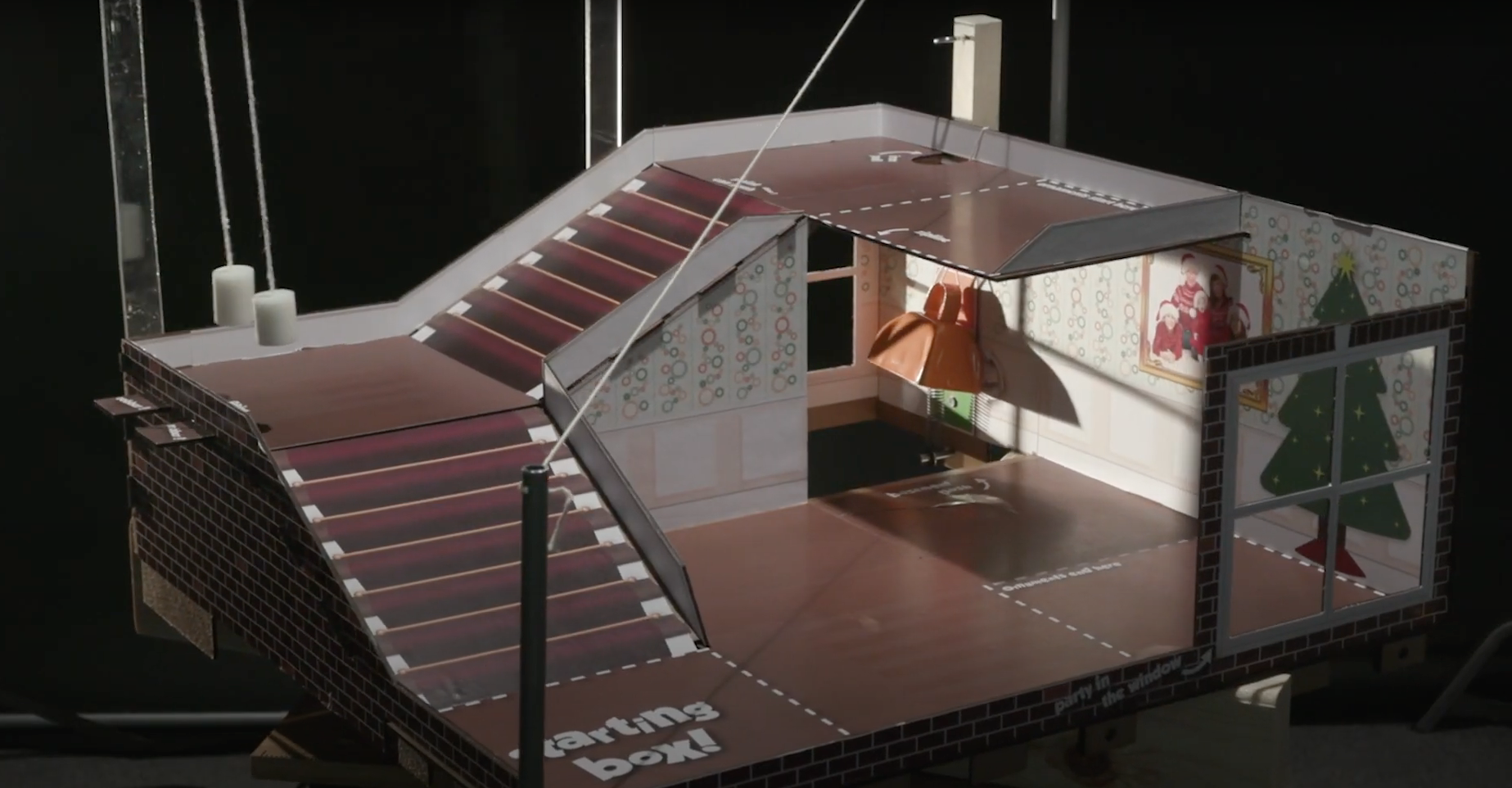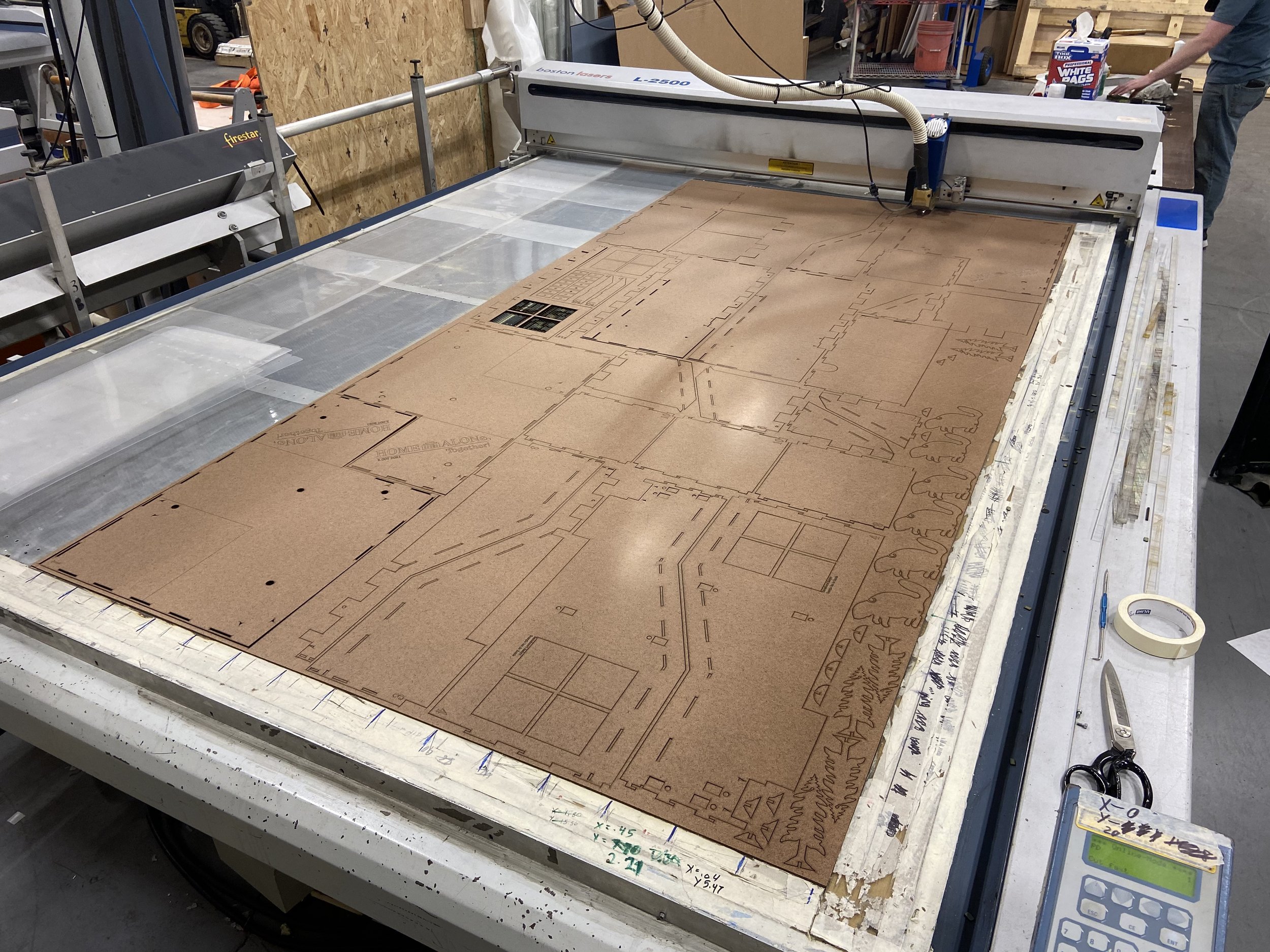
A robot competition gameboard that is compact, easy to assemble, and educational
As part of redesigning a hands-on mechanical engineering design course, I designed a competition gameboard where students could demonstrate their robots.
Each student received a gameboard to build in their home or dorm room, so it had to be easy to assemble, relatively small, and manufacturable. I also wanted the gameboard to be a learning tool during gameplay and during assembly.
An educational tool during gameplay
We wanted students to calculate energy, power, forces, and torques that their robot may use or deliver. To enable this, I designed seven Home Alone-inspired challenges for students to attempt and integrated them into the board design:
Push the Robbers down to the basement
Tip the paint cans over so they swing across the stairs
Cut the zip-line so the Robbers can’t use it themselves
Transfer the jacks in front of the window
Pull/push up the spring-loaded iron
Ride the zip-line down to the starting box
Spin the noisemaker to create firework-like sounds
An educational tool during assembly
Students’ first assignment was to assemble the gameboard. It had to be easy for novices to assemble and introduce them to key hand tools.
I recorded the assembly tutorial to the right. The video introduces students to hand drills, pilot holes, clip nuts, and basic shop safety.
Detailed design
I took the gameboard through dozens of iterations before it served as an example of strong mechanical design for our students.
Assembly details of interlocking panels
Designed for mid-scale manufacturability
There were 140 gameboards, and we had three weeks to manufacture all components.
I designed the structural panels to be laser cut and other components to be turned, milled, or cut with the table saw.



